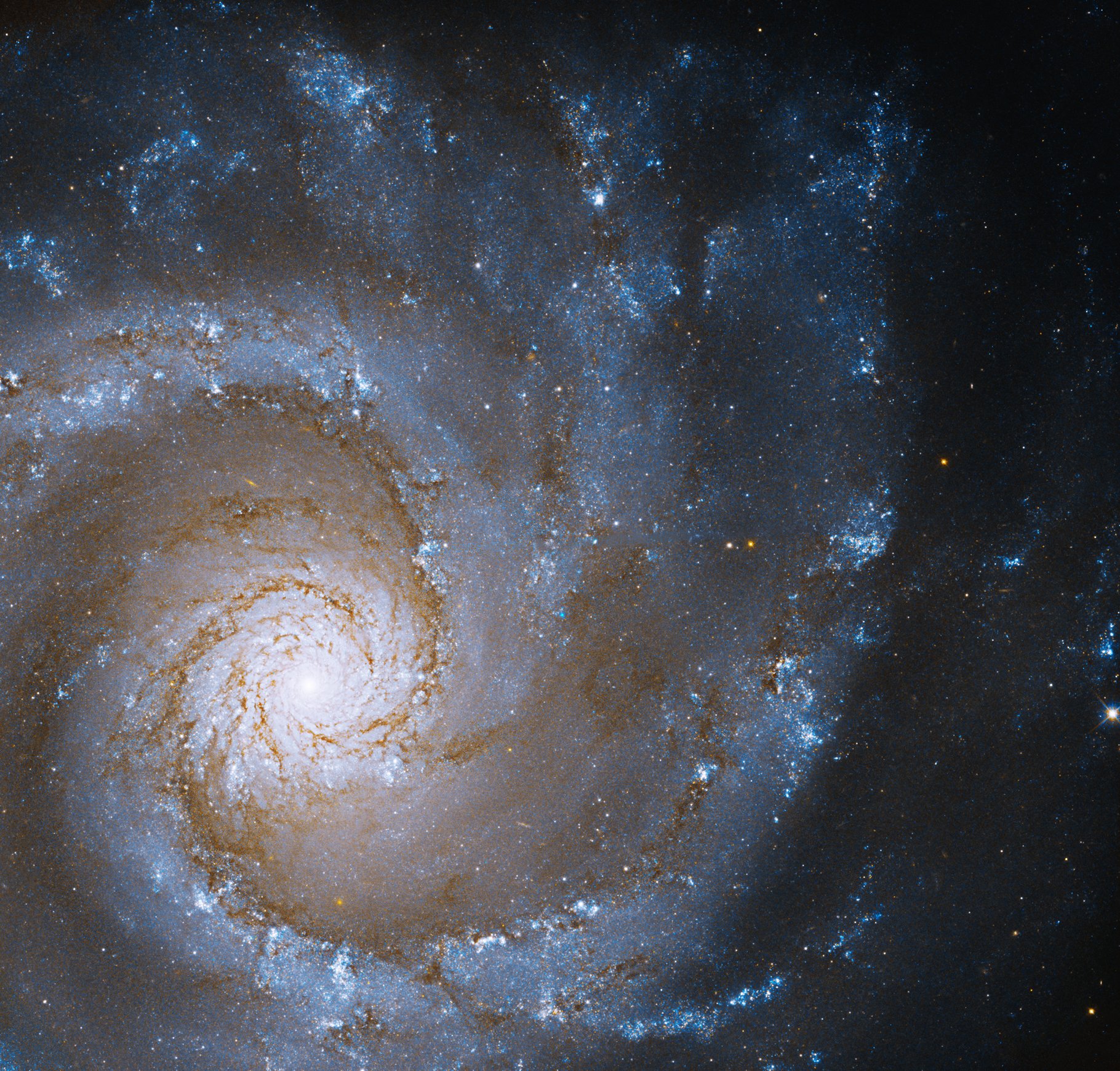This mesmerizing picture from Hubble shows Grand Design Spiral galaxy

A new picture captured by the NASA/ESA Hubble Space Telescope features NGC 3631, or something called a "grand design spiral", which lies some 53 million light-years away in the direction of the constellation Ursa Major.
A grand design spiral is a type of galaxy that features prominent, well-defined arms that appear to wind around and into the galaxy's nucleus.
This image was captured by the Hubble Space Telescope's Advanced Camera for Surveys (ACS) and Wide Field Camera 3 (WFC3). The color blue represents visible wavelengths of blue light, and the color orange represents infrared light.
Close inspection of NGC 3631's grand spiral arms reveals dark dust lanes and bright star-forming regions along the inner part of the spiral arms.
Feast your eyes on the Grand Design Spiral (or NGC 3631), located some 53 million light-years away in the direction of the constellation Ursa Major.Discover more: https://t.co/4RktMOEZLL#GalaxiesGalore pic.twitter.com/39TcKEPp3g
— Hubble (@NASAHubble) May 26, 2022
The Hubble Space Telescope was launched and deployed by the space shuttle Discovery in 1990. The Advanced Camera for Surveys was installed on the telescope during Servicing Mission 3B in 2002 and it has detectors that are sensitive to visible and ultraviolet light.
WFC3 was installed during Hubble Servicing Mission 4 in 2009 and it can observe ultraviolet, visible, and near-infrared light. It studies a diverse range of objects and phenomena - from young and extremely distant galaxies to much more nearby stellar systems, to objects within our very own solar system and exoplanets - planets outside our solar system.










